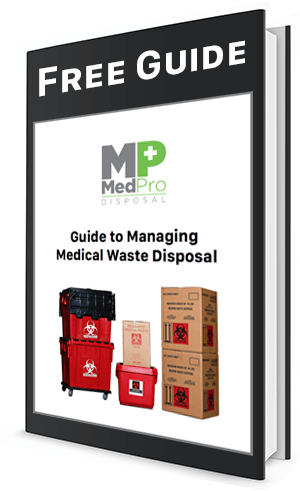First let’s talk about medical waste, medical waste is the byproduct of medical, surgical and treatment procedures performed at healthcare facilities. This waste requires proper handling and management. Biohazardous waste consist of medical products, apparatus, and items that have been used on patients, “medical waste” is generally defined as any waste contaminated with potentially infectious agents or materials that may pose a threat to the public health, animals or the environment.
Therefore, medical waste requires proper management to ensure safety of the general population, animals and compliance with state and federal regulations.
Medical Waste Management – Why is it necessary?
The management of waste generated by healthcare facilities is not a process to be taken lightly. This procedure is vital in ensuring the safety of the staff, population and environment.
Any discrepancy in the process could violate state or federal laws, can cause harm the reputation of the healthcare facility or harm the environment. Improper handling of medical waste can also endanger the healthcare employees, professionals and associated staff. Therefore, compliance, training and education play an equally important role in waste management.
Efficient Waste Management – What’s in it for your organization?
Generating medical waste comes with health risks, proper waste management enables the organization to minimize the risk factor, foster a safe and healthy working environment which will in turn optimize performance and profitability.
It allows the healthcare managers, supervisors and administrators to align, integrate and streamline their processes. Proper education and management of waste streams could also reduce the cost associated with disposal.
Best Practices of Medial Waste Management
Since the protection and well-being of the organization is the prime responsibility of a healthcare organization, it is essential for them to execute a proper plan and training for waste management. The code of federal regulations (CFR) has ‘regulations’ that must be followed here. An exposure control plan that is available to all employees and bloodborne pathogens training are just a few examples of those requirements.
MedPro has an online compliance program that covers what is needed in terms of training, certificates and has templates you can use to create your own exposure control plans plus more.
- Assign Responsibilities
Medical waste ultimately is the responsibility of the healthcare institution. Ensure your employees have had the proper training and understand proper procedures. Something as simple as what goes into what container could, at the minimum, cost you more money because you are paying medical waste prices for solid waste or at a maximum could cause legal and financial troubles for improper disposal of waste.
- Classify Your Waste Types
Identify the areas that produce waste as well as the type of waste that is produced within the premises of your healthcare organization.
- Prepare a Waste Management Plan
Considering the type and average frequency of medical waste production, prepare a waste management system entailing the standard operating procedures, maximizing controls and preventive measures related to medical waste. Hire a licensed waste disposal service to handle and dispose the contaminated and biohazardous waste.
- Estimate Your Costs
Figure out the cost of waste management and analyze its profitability for the benefit of your organization in terms of the sustainability of the environment, performance and process improvement.
- Assess for Improvements
Incorporate a system to periodically assess the efficacy of your medical waste management plan. This will help you identify the areas for improvement and control cost associated with medical waste.
MedPro has created a guide to managing medical waste you may find useful, you can download it here. Or check out our calculator below to get an instant online quote.



